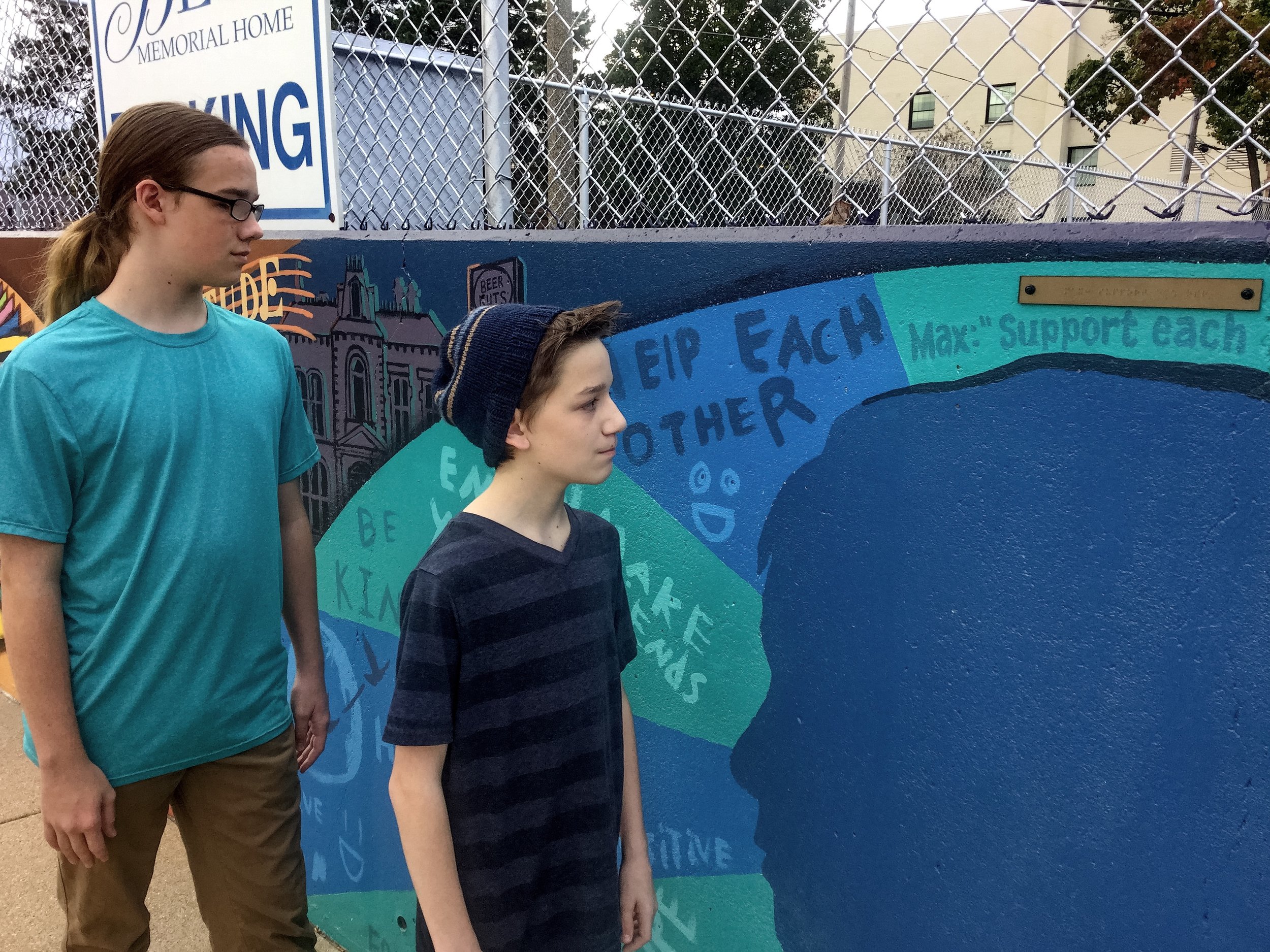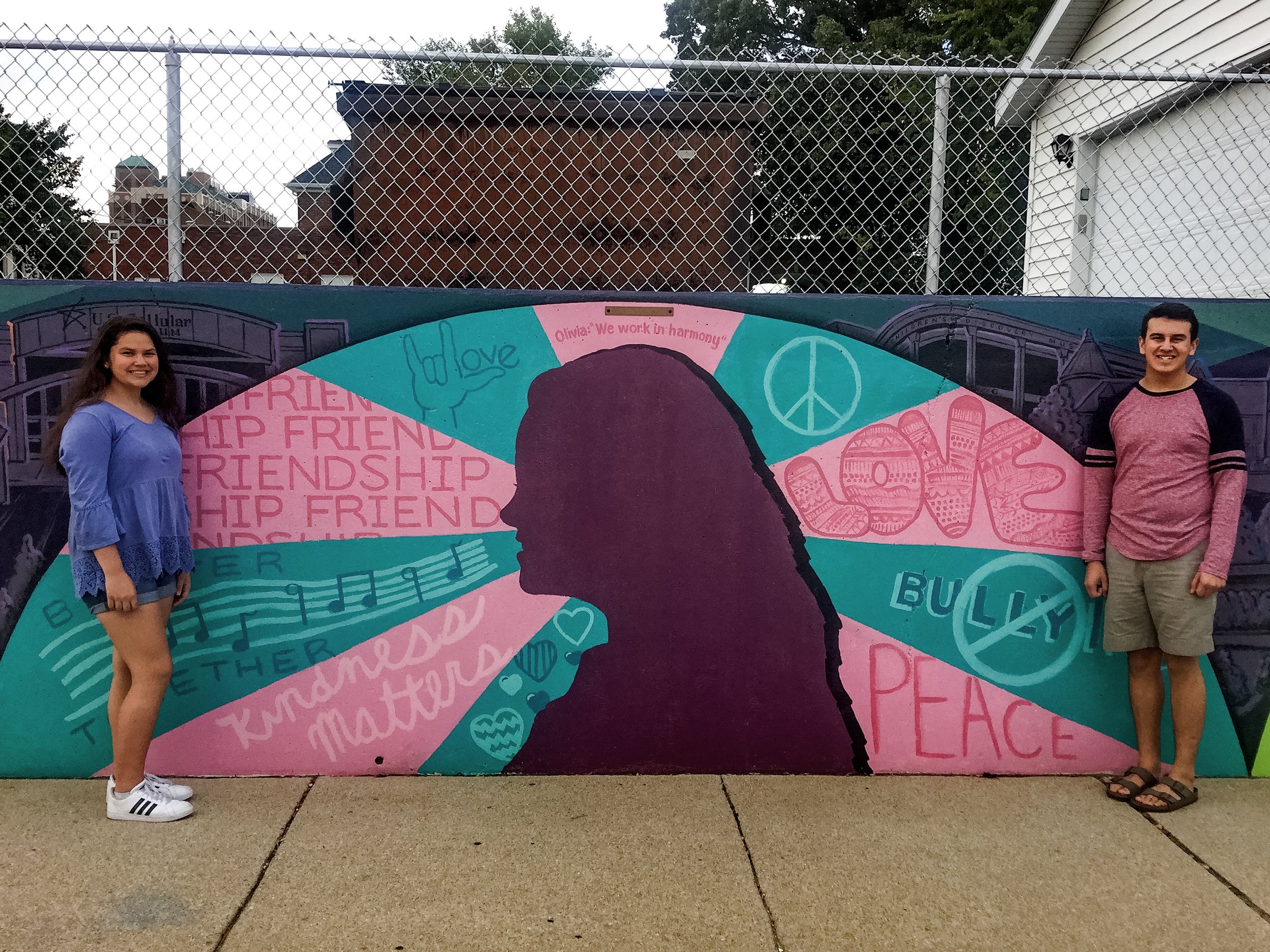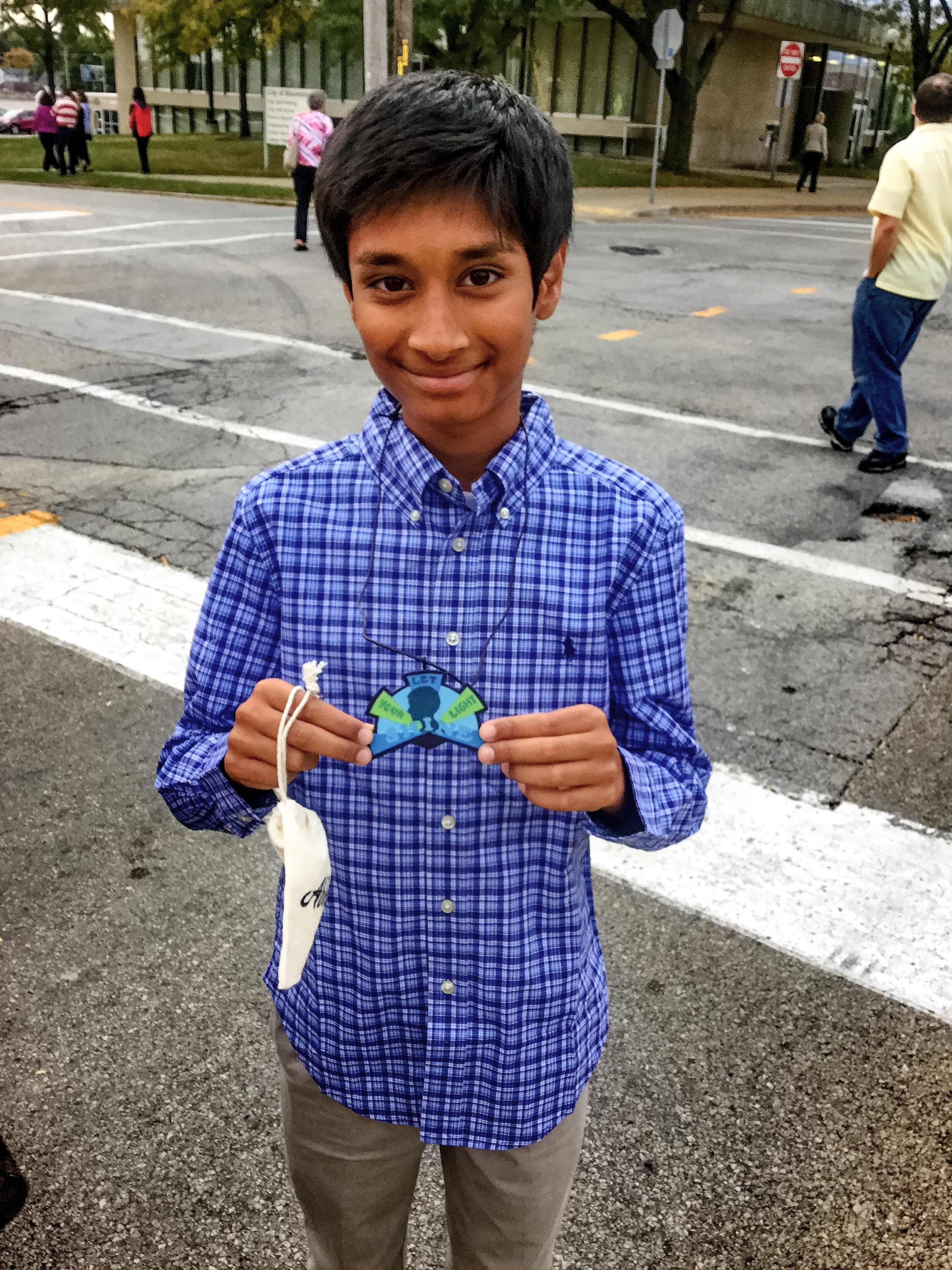How did you choose your neighborhood?
John and I considered three main things when we were looking for a house 7 years ago. We wanted an old house with character, we wanted most of the hard updating work to have already been done, and we wanted the house to be in school District 87 because at the time, Andrew was in high school and that Purple Raider had absolutely no interest in becoming an Ironman, even though I assured him that people in our family look great in orange and black!
As we looked for a house, we were far less concerned about a particular neighborhood than we were about finding a cool house. When we found what is now our home, I knew the second we walked into the house, it had to be ours.
We love our house. And we love our neighborhood. In fact, the houses in our neighborhood are a lot like the houses in this neighborhood. Many of them were built in the early 1900’s, with wide hardwood baseboards, hardwood floors, ornate woodwork, claw foot tubs, and high ceilings. So much to love!
One difference between the neighborhood I live in and the neighborhood I work in is that most of the people who live near me are like me. They leave their houses in the morning, in their late model cars, they go to work and come home in the evening, dry cleaning in one hand and brief cases in the other. They work in offices, spend their free time playing golf, watching their kids play sports, or working in their yards. They went to college and expect their kids will too. Aside from an occasional teenager over the years, I have never seen a person in a food service uniform in our neighborhood. There are no people with black or brown skin living on our street and very few people who are not white live in our entire neighborhood.
In this neighborhood, where I work, I notice adults going to work in many different types of uniforms, at all times of the day, in the morning, in the afternoon, and even when I am here late into the evening. The people I interact with who live near here have black, brown, and white skin, most of them have black skin. Most of them have attended high school, some have finished high school, few have attended college. I’ve never seen anyone with golf clubs and the sight of children in sports uniforms, like PCSL soccer, is not nearly as common as it is in my neighborhood.
According to my smart phone, at 9 am on most weekday mornings, it takes just 6 minutes to get from my home to my office, if I don’t stop at Coffee Hound.
I live about 12 blocks east of Main Street and the church is about 4 blocks west of Main Street In Bloomington, Main Street is one of the reference points we use to talk about relative location. It’s important to note that there is an economic divide in our community for which Main Street is generally understood as the dividing line. In other words, many people do not see the neighborhoods west of Main Street as desirable places to live and work. There are similar dividers in Normal and other cities as well. I am using Bloomington as an example this morning.
This divide is really bad for our communities for many reasons, chiefly, in my opinion, because of the impact it has on the futures of not just the children who live west of Main Street, but the impact it has on the futures of the children east of Main Street.
You see, children who grow up in poor neighborhoods are likely to stay poor their whole lives. And our propensity toward self segregation, whether it’s the Main Street divide, or exclusive subdivisions, compounds this harsh reality. In a study by Harvard University and the University of California at Berkeley, that examined the odds of a child moving up the economic ladder within our nation’s cities, it was noted that in places where people in poverty and people who are affluent are the most isolated from one another, the prospects of children who are poor are the worst.
This isn’t surprising though, since public schools are typically funded by the taxpayers who live in that immediate community, leading to well funded schools for children of economically advantaged parents and struggling schools for children whose parents are poor and less able to provide other opportunities. There are many layers to this, and I know there are other factors involved in neighborhood systems. However, the truth is, many people choose their homes based on the schools. So, those of us with the means to choose select what we perceive as the best schools while the people who have no choice are left with the schools that receive the least funding, in poor neighborhoods. And this helps perpetuate the cycle of poverty. It is also an example of systemic racism. And it will never change unless the people who are benefitting from the current system say, “Enough, my children are special, but they are not more special than the children who live west of Main Street”
And what about the east of Main St. children? I’m using these groupings “west of Main St. children” and “east of Main Street children” metaphorically. We could apply groupings like this to almost any urban setting in our country. How does this self segregation impact the east of Main Street children? This segregation deprives children from more affluent families of the opportunity to be aware of the circumstances of other human beings, human beings that live a mere 6 minutes away from them. It keeps other human beings at arm’s length, perceiving them, and their situations, as something to be feared and avoided, and deprives both groups of the opportunity for true community with one another. Years ago, when I was serving another church as the youth minister, I and the children’s ministry committee decided that instead of having VBS at our church, we would have it at the Boys and Girls Club so that we could share our program with the children there. We thought it was a great idea. And it was. There was one thing that surprised us though. While VBS attendance was very good, the family participation from our church at that VBS was the lowest it ever was. When I asked families who chose not to participate why they were not participating, I got answers like, “We are afraid to be over there at night,” “My kids don’t know anyone over there,” and “I’m afraid of what my kids will learn from those kids.” I have to tell you, when I heard those responses, my heart broke, mostly for the kids in my own church who were being kept so isolated from the real world and from people who had so much to teach them.
What does it mean to love your neighbor as yourself? I think we have to first answer the question, “Who is our neighbor?” The reality, as I shared earlier, is that for most of us, our physical neighbors are people who are like us. But because the Bible is rich with examples of the goodness and intentionality with which God injected diversity into our world, we have to reject the idea that God intended for us to only think of people like ourselves as our neighbors. I find myself recalling about the phrase, “expanding the neighborhood,” that Rev. Dr. Sharon Watkins coined in her book Whole: A Call to Unity in Our Fragmented World. We have to expand who we think of as our neighbors. Our neighbors are the people who live east of Main St. and west of Main St., people who live on the other side of our northern border and the other side of our southern border, people who live in Albuquerque and Aleppo, and everywhere in between.
In my mind, then, the other question Jesus’ command to “love your neighbor as yourself” brings up is, “How do we love our neighbors?” I had some help answering this question. A few weeks ago, I had lunch with Dorothy Sallee and we talked about this very passage. She mentioned that she had been thinking about what it means to love our neighbors as ourselves. She began with the question, “How do we love ourselves?” She listed the things we do to care for ourselves like making sure we eat the right things, making sure we get plenty of sleep, keeping ourselves safe from the elements and from other dangers. That’s how we love ourselves…by making sure we have what we need to stay physically healthy. But also, we love ourselves by not being hypercritical of who we are, by valuing the gifts and talents God has given us, and by insisting that others treat us as the children of God that we are. These are the things we are taught to do for ourselves. These are the things we must be willing to do for others. In this case, love is not an emotion. It is not something we always feel. It is something we do. In my own life, I often find that the feeling of love comes much after the action of love. I invite you to spend some time thinking about that in your life.
So, if we are to love our neighbors as ourselves, and we have expanded our neighborhood to include all human beings, then we cannot hide on the other side of Main St., pretending to be unaware of the lives of our neighbors. Christian activist and author Shane Claiborne, in his book, The Irresistible Revolution: Living as an Ordinary Radical, wrote this, “The great tragedy in the church is not that rich Christians do not care about the poor but that rich Christians do not know the poor…
"I long for the Calcutta slums to meet the Chicago suburbs, for lepers to meet landowners for each to see God’s image in the other…
"I truly believe when the poor meet the rich, riches will have no meaning. And when the rich meet the poor, we will see poverty come to an end.”
I think he is right. The world can be different, but we have to be different. We have to expand our limited network of people who look, act, and believe just like we do. When we do, we will see the rich diversity that God has planned for our lives. We must find ways to meet our neighbors, all of our neighbors, and love them on purpose, love them, with action, not warm fuzzy emotion...that emotion comes much later. And we can start in the neighborhoods we live in right now.
We can be real neighbors to the people who live near us and little by little, we can expand the neighborhood. If you don’t know your neighbors, introduce yourself. If you already know your neighbors, think about building on those relationships. Maybe it’s time for pizza on the patio or s’mores after dark one night. And while you are getting to know the neighbors that live close to you, consider getting to know neighbors who live farther away. Take your kids to a park on the other side of town. Watch how quickly they make new friends. Go to a different grocery store. You never know who you might meet and how they might change your life. Consider opportunities to engage the people who live in the neighborhood around the church.
Think about the amount of time you spend interacting with people who are like you compared to the amount of time you spend with people who are different from you. Enrich your life with new people, new experiences, new ways of being, and new ways of loving your neighbor as yourself.
In that spirit, today (October 2), in churches all over the world, Christians are gathering around the communion table, in celebration of World Communion Sunday. The communion tables don’t all look alike, the bread blessed and broken is not all the same, some churches use wine, others use grape juice. But at every table, as each person is welcomed, Jesus is made real in the breaking of the bread and drinking of the cup; and God’s love for everyone is proclaimed over and over again.
Today we are reminded that we are better together. We are made for community. And as good neighbors and good stewards we must be prepared to invest not only our money, but our time, in truly loving our neighbors, especially the ones who live on the other side of the economic divide. There is no such thing as drive by love. Real love requires commitment and time…time on front porches, around dinner tables, shoveling walks, raking leaves, and bringing in the mail. Real love for our neighbors requires us to get close enough to see and understand our neighbors’ everyday joy and intense suffering.
My prayer for all of us is that the keys to our houses will always unlock homes that are filled with love and hope for the future. And that as we walk into that future, we commit ourselves to kindling that same hope in the lives of our neighbors…next door, down the street, across town and all over the world.

























